Springerdoodles: The Springerdoodle Dog Breed Information
Springerdoodles have recently gained popularity among dog lovers who appreciate the intelligent and low-shedding qualities of Poodles blended with the joyful nature of Springer Spaniels. These hybrids sport a coat that varies from slightly wavy to quite curly and comes in many colors.
Springerdoodles are affectionate pups that quickly become loyal to their families, making these hybrid dogs an ideal fit for a cozy home life. With enough physical activity and mental stimulation, this breed information shows that Springerdoodles can thrive and get along well in various living environments, including apartments.
Training and socializing these Sproodles well is vital to unlocking their full potential; they often excel in activities like obedience and agility, according to the American Kennel Club. According to their breed information, grooming the Springerdoodle dog breed regularly is crucial to keep their fur in top-notch condition. Also, providing proper nutrition to the Springerdoodle dog breed is necessary to maintain their health.
Key Takeaways
- Springerdoodles blend Poodle smarts with Spaniel joy.
- Suitable for various homes with proper exercise and engagement.
- Consistent training and grooming are vital for their wellbeing.
Quick Facts
The Springerdoodle, an appealing hybrid dog, sports a coat with various shades. The coat usually has a medium to long length that’s wavy or curly. This crossbreed, a mix of the friendly English Springer Spaniel and the Poodle known for its hypoallergenic coat, offers an excellent option for allergies thanks to its minimal shedding.
Their coat’s unique texture, combining the Poodle’s dense curls and the Spaniel’s softer waves, needs regular grooming to stay in good shape and avoid tangles.
Crossbreeding can lead to what is known as hybrid vigor, potentially increasing genetic diversity and lowering the risk of inherited health issues. Springerdoodles also stand out for their intelligence and willingness to learn, inherited from both parent breeds.
These qualities make them excellent candidates for roles like therapy and assistance dogs, where they can put their smarts and adaptability to good use.
Springerdoodle Pictures
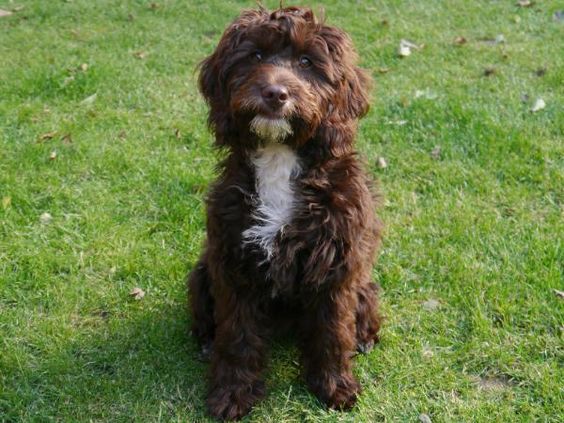
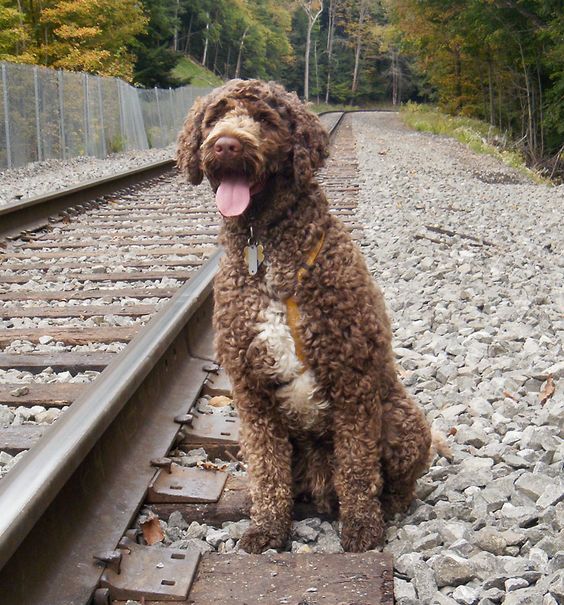

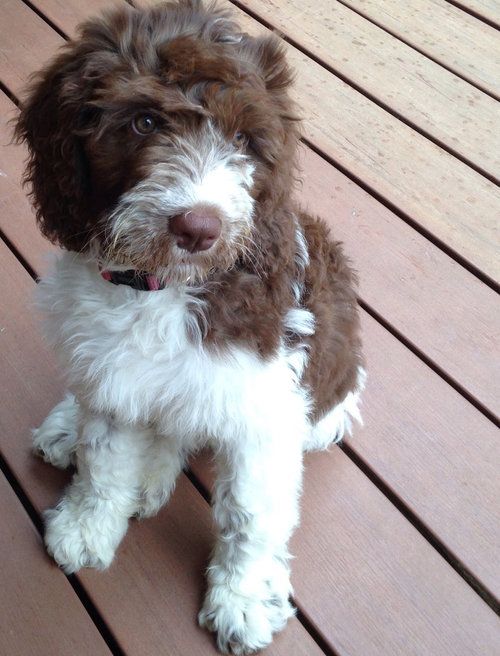


Overview
The Springerdoodle is a charming mix of a Springer Spaniel and a Poodle, known for sproodle its smarts, warmth, and athletic ability. This mixed breed combines the friendly nature of Springer Spaniels with the Poodle’s non-shedding coat and intelligence, making them excellent companions for families.
They are sociable and quickly become devoted to their human family members. With their flexible personality and eagerness to please, Springerdoodles are great candidates for obedience and varied types of training.
They also need regular physical activity and mental challenges to stay happy and healthy.
Key Traits
Springerdoodles are intelligent and have a low-shedding coat, which makes them great for families, especially those with allergies. These dogs learn quickly, showing their intelligence and making them a joy to train. They have a warm, affectionate nature, which means they thrive on positive feedback and love to make their owners happy.
| Trait | Description | Influence on Care |
|---|---|---|
| Intelligence | Learns quickly and easily | Provide puzzles and learning games |
| Hypoallergenic Coat | Minimal shedding, allergy-friendly | Regular grooming needed to maintain coat health |
| Affectionate Nature | Loves close contact with family | Ensure plenty of family interaction and companionship |
| Eager to Please | Highly responsive to training cues | Use rewards-based training for best results |
| Playful Temperament | Energetic and loves to play | Daily exercise and interactive play are essential |
They also have a playful side and need daily exercise to stay happy and healthy. Caring for a Springerdoodle is about meeting their physical and emotional needs ensuring they are active and mentally engaged.
Breed Origins

The Springerdoodle is a unique mix born from purposefully breeding two purebred dogs. We must look at the qualities each parent breed brings to the Springerdoodle’s genes. Also, we should examine the timeline of events that led to their intentional mating. Understanding how crossbreeding affects the health and personality of these dogs is critical. Plus, knowing the methods used to check for genetic health and potential inherited issues in Springerdoodles is vital.
This examination helps us grasp how the breed came to be and provides potential owners with detailed knowledge about the Springerdoodle’s characteristics.
Ancestral Breed Contributions of Springerdoodles
The Springerdoodle is a unique mix, drawing from the long histories of its English Springer Spaniel and Poodle forebears.
Originating in Spain, the English Springer Spaniel is praised for its hunting prowess and ability to fetch, qualities that the Springerdoodle inherits, showing up as a lively and intelligent personality.
The Poodle, often linked with French luxury, began as a German hunting dog, prized for its water retrieval skills—a love for water that the Springerdoodle also shares.
This combination gives the Springerdoodle its low-shedding coat from the Poodle and a friendly disposition from both breeds, making it an adaptable pet perfect for families.
Historical Development Timeline
The Springerdoodle has an exciting heritage, from the English Springer Spaniel and the Poodle. These two breeds originated in Spain and Germany, respectively.
English Springer Spaniels were known for their skill in flushing out and retrieving games, showcasing their agility and sharp senses. Poodles, believed to have come from Germany, were valued for their intelligence and ability to recover from water.
The Springerdoodle, a mix of these two breeds, came into existence in the United States towards the end of the 20th century. Breeders aimed to create a dog that would shed less, making it a good choice for those with allergies. They also wanted a friendly and fit dog for family life, taking advantage of the Spaniel’s pleasant nature and the Poodle’s smarts.
Genetic Impact Assessment of Springdoodle Breed
Springerdoodles are a mix of English Springer Spaniel and Poodle genes, which shape their appearance and health profile.
An examination of the Springerdoodle’s genetics shows a mix of traits from both parents, affecting their looks and vulnerability to health issues.
The Poodle’s hypoallergenic fur is a significant benefit, especially for people with allergies.
Yet, both the Springer Spaniel and Poodle lines have a history of hip dysplasia, a genetic disorder that can affect joint health. Other potential health problems in Springerdoodles include eye conditions, skin disorders, and mitral valve disease.
Careful selection of parents for breeding is critical to reduce the risk of these inherited conditions.
Physical Dimensions of Springerdoodle Breed
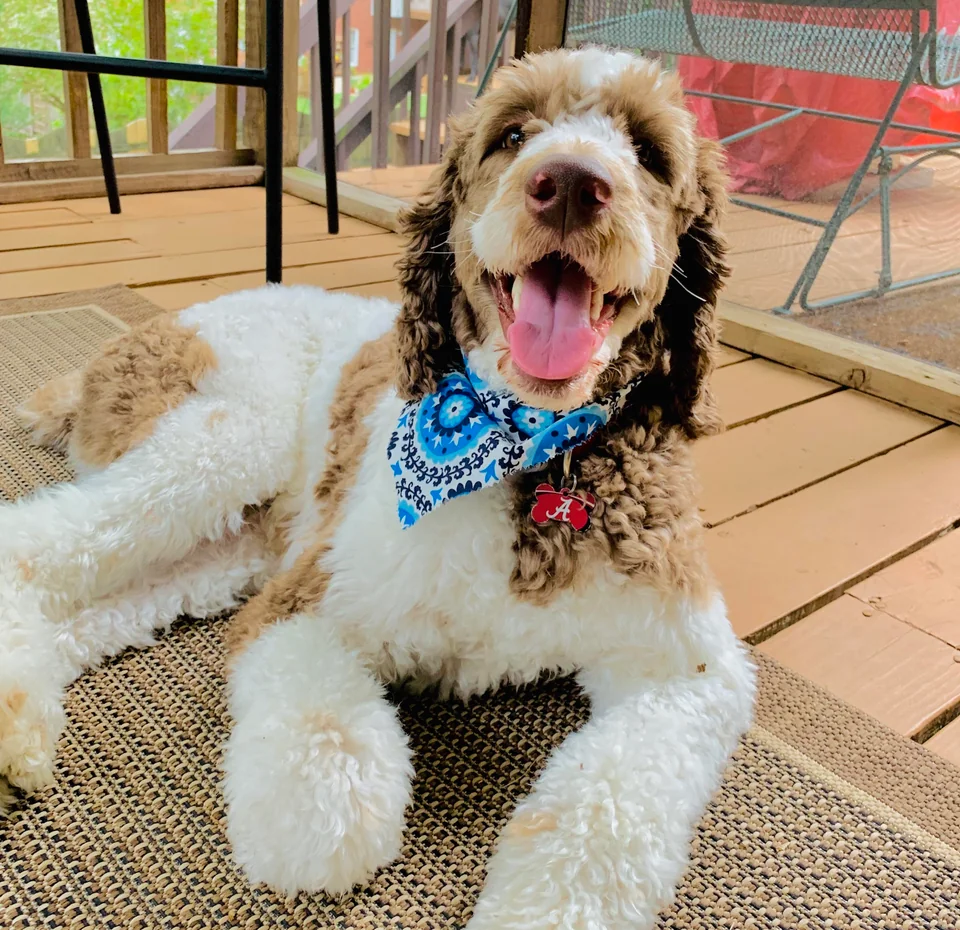
Understanding the size and growth of a Springerdoodle is vital for anyone considering this breed as a pet. They typically stand between 16 and 24 inches tall at the shoulder and weigh 30 to 60 pounds.
Their growth rates and adult size can vary based on their genetics, so knowing how big your puppy might get is vital.
A Springerdoodle’s growth is also influenced by their level of physical activity, which means they’ll need enough room to move around and stay healthy.
These factors are essential for future owners to ensure they can provide the right environment and care for their dog’s well-being.
Breed Size Range from Puppy to Adult
When you measure a Springerdoodle, you’ll find that female dogs usually stand about 16-21 inches tall and weigh 35-45 pounds. Male Springerdoodles are a bit larger, typically reaching 18-23 inches in height and weighing 45-55 pounds.
This crossbreed combines traits from Springer Spaniels and Poodles, which accounts for the size differences in Mini and Standard varieties. The Mini Springerdoodles are more diminutive, mainly due to the Miniature Poodle genes, while the Standards are bigger, mirroring the size of the Standard Poodle.
This information helps future owners gauge how much space their pets need and what to expect as they grow. Close monitoring of their growth allows you to estimate their adult size reasonably.
Height & Weight Averages
When assessing the size of Springerdoodles, we see they’re generally classified as medium to large dogs, fitting right into most family settings. The standard variety of this breed stands as tall as 24 inches and weighs between 30-60 pounds.
Smaller versions, known as mini Springerdoodles, reach heights of 10-15 inches and weigh a lighter 5-25 pounds, making them ideal for more compact living spaces. Female Springerdoodles are typically smaller than males, a common trait in dogs.
The size of these pets can vary due to their genetics and how they were bred, which also influences how well they adapt to different home environments.
Growth Rate Patterns
As Springerdoodles grow from energetic puppies into adults, they consistently gain height and weight. This steady growth is essential for maintaining their health. During their early months, these dogs increase, but this growth slows down as they reach the end of the puppy phase.
Owners should ensure Springerdoodle puppies get enough daily exercise to keep their energy in check and support healthy bone and muscle development. Regular physical activity is also crucial in preventing health issues, like hip dysplasia, that can be worsened by uneven or fast growth.
Keeping an eye on their growth rate helps Springerdoodles grow well and hit their physical milestones.
Springerdoodles, growth, exercise, health complications, and monitoring are significant for any dog owner.
Ideal Living Spaces
A Springerdoodle’s living space should be spacious and energetic, matching their playful and active temperament. These dogs, typically medium to large, require plenty of room to move around and stay active to maintain their health and happiness. Owners living in various types of homes must ensure their furry companions have enough space to behave naturally and remain free from stress.
Springerdoodles need to have regular exercise and activities that keep their minds sharp. While they can adapt to apartment living, their home should include a consistent routine of outdoor activities. Ideal for active families, these dogs flourish with indoor and outdoor areas supporting their lively lifestyle.
Exercise Impact on Growth
Exercise plays a pivotal role in the health and development of a Springerdoodle. These lively dogs need regular activity to manage their energy and prevent weight gain.
Exercise is not just about keeping them slim; it’s vital for their overall physical growth. A good workout routine helps build a strong, muscular body and reinforces bone density for a robust skeletal framework. In contrast, a lack of activity can result in weak muscles and potential weight problems.
Consistent and stimulating exercise is vital to keep a Springerdoodle in great shape, reflecting its natural zest for movement and ability to stay active.
Temperament Traits of Springerdoodle Puppies
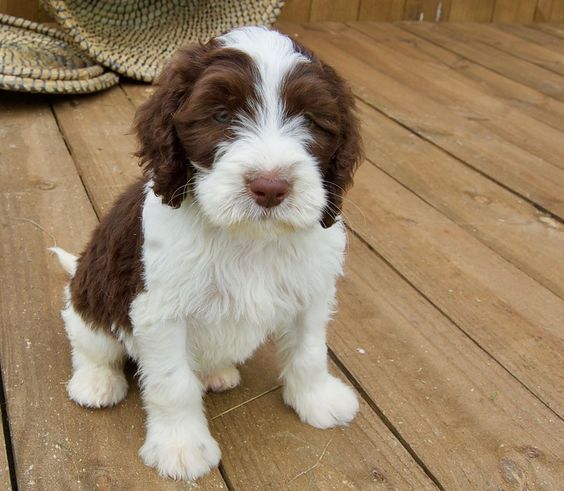
Understanding the temperament of a Springerdoodle is vital for anyone considering adding one to their family. These dogs have a mix of traits that shape their behavior and how they should be trained and cared for.
Springerdoodles thrive on social interaction and need to be around people often. Their intelligence means they learn quickly but get bored if not mentally stimulated. They have a lot of energy and need plenty of exercise to stay balanced and happy.
While their playful nature is charming, it’s important to supervise them around young kids and other pets to ensure everyone gets along safely.
Friendly, Sociable Nature of English Springer Spaniel and Poodle
Springerdoodles are friendly and outgoing dogs, always ready to make friends with people and other animals alike. They love play, which makes them great companions for families, especially those with kids, due to their patient and caring nature.
These dogs enjoy interaction and require it for their mental and social growth. Early socialization is critical for Springerdoodles to bring out their best qualities, ensuring they blend smoothly with their families and other pets.
Their ability to adjust to different situations speaks volumes about their intelligent and flexible personality.
Intelligence, Training Responsiveness
Intelligence and ease of training are critical traits of the Springerdoodle, a mix between the astute Poodle and the obedient English Springer Spaniel. These dogs are known for their sharp minds and typically pick up on training quickly, making them a delight to teach. Their knack for learning rapidly often leads to success in obedience training, where they impress with their ability to grasp and execute commands.
Using rewards and positive feedback works well with Springerdoodles, who love to please their owners. This breed thrives on social interaction and responds well to a training environment full of encouragement and approval.
Their cleverness and the proper training techniques make Springerdoodles skilled and adaptable companions.
Energy Level, Playfulness
Springerdoodles stand out for their intelligence and responsiveness to training. Proper training and exposure to different people and situations are crucial to constructively harnessing their zest. These dogs are ideal for active individuals who enjoy spending time on activities that cater to the dog’s need for physical exertion.
Springerdoodles are known for their high energy level and love for play. Their natural excitement makes them perfect for energetic outings like hikes and swims, which keep them both physically fit and mentally sharp. With the right amount of activity and mental engagement, Springerdoodles thrive and become well-rounded pets suited for various homes and lifestyles.
Family Compatibility
Springerdoodles are a fantastic match for families thanks to their flexible nature, high energy, and love for fun. These dogs come from the friendly English Springer Spaniel and bring qualities that make them stand out as family pets.
Studies on their behavior indicate that they are affectionate and loyal and have a calm temperament, which is excellent for homes with kids. Intelligent and easy to train, Springerdoodles fit well into family life, responding to people’s feelings and quickly following instructions.
Their love for interactive play is a bonus for families, keeping up with the lively atmosphere that comes with raising children.
Prey Drive Management
Managing a Springerdoodle’s instinct to chase can be challenging due to its energetic nature and history as a hunting companion. To direct their energy positively, it’s vital to start training early using rewards-based methods.
Training teaches obedience and keeps their minds active, which is necessary for this intelligent breed.
Socializing your dog in different settings helps reduce unwanted chasing by getting them used to various sights and sounds.
Regular health check-ups ensure your Springerdoodle stays fit, and maintaining their coat with frequent grooming avoids discomfort that might trigger their chasing behavior.
Health Concerns & Prevention of the Best Dog

Springerdoodles, with their Springer Spaniel and Poodle heritage, are prone to specific genetic health issues. To safeguard their health, it’s essential to take proactive steps. These include conducting thorough genetic health screenings to spot hereditary conditions early on. Consistent veterinary check-ups are crucial for the early identification and treatment of health problems.
Implementing preventative care is vital to keeping Springerdoodles healthy. This involves establishing a balanced diet and regular exercise to ward off issues tied to lifestyle. By addressing these areas with care and attention, Springerdoodles can enjoy a high quality of life.
Genetic Health Screening
Genetic health screening is vital for detecting a tendency towards inherited diseases in Springerdoodles, such as hip dysplasia, elbow dysplasia, and mitral valve disease. These tests are essential because they uncover potential health issues before symptoms appear.
By analyzing DNA markers linked to the common ailments of Poodles and English Springer Spaniels, genetic testing guides breeders to make better choices, aiming to improve the health of future puppies.
It also equips new owners with essential information regarding their pet’s health risks, supporting early and effective preventive care.
Regular Veterinary Check-ups
Regular vet check-ups are vital to keeping Springerdoodles healthy and happy. These appointments can catch common issues like hip dysplasia and ear infections early, which is particularly relevant for this breed.
Knowing the value of these health visits is vital for families who want to ensure their Springerdoodle remains an ideal pet. Regular health checks help maintain a balanced lifestyle for your dog by tackling potential health issues before they escalate.
Staying on top of these visits helps avoid long-term health problems, making your Springerdoodle a lively and loving family member.
Preventative Care Measures
To keep your Springerdoodle healthy, you should follow some critical preventative care practices. Regular grooming is essential to keep their skin healthy and prevent matting. Matting can cause discomfort and even infections if not appropriately managed.
Your Springerdoodle’s diet should match their active lifestyle. It’s essential to feed them food that is high in protein but low in fat. This helps prevent weight gain, which can lead to joint issues and hip dysplasia. A well-thought-out diet can help maintain their health and counteract potential genetic health issues.
Grooming and Maintenance for Springerdoodles and Mini Springerdoodles
Caring for a Springerdoodle’s coat requires a consistent grooming routine. This unique blend of Poodle and Springer Spaniel hair needs regular attention to maintain its hypoallergenic quality and to avoid mats. A proactive approach to grooming is vital for their well-being, which includes:
- Brushing the coat often helps reduce hair loss and keeps the fur in good condition.
- Tailoring grooming techniques to the breed’s low-allergen coat helps meet their specific needs.
- Setting up a bathing schedule that considers their skin’s needs and how active they are ensures their coat stays clean and healthy.
- Regular nail trims and ear cleanings are crucial to staving off pain and potential infections.
Each step is essential for keeping your Springerdoodle looking and feeling their best. A well-groomed dog is a happy, healthy dog.
Coat Brushing Frequency
To keep your Springerdoodle’s coat healthy, brush it two to three times a week. This prevents tangles and reduces shedding. Their curly coats need regular care to stay in top condition.
Brushing spreads the dog’s natural oils, giving the coat a shiny look and preventing knots. If your Springerdoodle enjoys time at the park or outdoors, brushing is vital to remove dirt and prevent mats.
Regular grooming keeps your dog feeling good and their coat wavy and soft.
Hypoallergenic Qualities of Sproodles
Springerdoodles, a mix of English Springer Spaniel and Poodle have hypoallergenic coats that make them ideal for those with pet allergies. Their Poodle heritage makes their skin less likely to cause allergic reactions, but they also need regular grooming to stay clean and tangle-free.
Owners should brush their Springerdoodle’s curly coat several times weekly and schedule consistent visits with a professional groomer. Proper grooming helps minimize dander and loose hair, common triggers for allergies, keeping the skin in its best hypoallergenic condition.
Bathing Routine Tips
Caring for a Springerdoodle’s coat requires regular bathing to keep its curly fur clean and healthy. When washing these dogs, it’s best to use a gentle shampoo made for canines to prevent skin irritation and remove dirt without causing discomfort.
The water should be warm to make the bath a pleasant experience for your pet and avoid any distress. After the bath, it’s vital to dry your dog correctly to prevent skin infections.
A commitment to the grooming of your Springerdoodle is an investment in their overall well-being and joy.
Nail Trimming Schedule
Springerdoodle owners, known for their vibrant and energetic companions, must maintain a consistent nail-trimming schedule to keep their pets happy and mobile.
These energetic dogs are a mix of Poodles and English Springer Spaniels, inheriting a zest for life and a need for regular physical activity.
Long nails can lead to discomfort and affect the way a dog walks, which might cause skeletal issues. Experts suggest that nail trimming every 3-4 weeks is ideal for preventing these problems.
A routine nail care regimen is essential for Springerdoodles to ensure they remain the perfect pets for those with an active lifestyle.
Ear Cleaning Importance
Proper ear care for Springerdoodles is vital to prevent infections, a common issue for breeds with floppy ears. The Spaniel and Poodle genetics mix in Springerdoodles means their ears have less airflow, leading to wax and dirt build-up. Neglecting ear cleaning can result in otitis externa and other ear problems.
Regular ear maintenance is essential to their overall grooming routine to keep these energetic and intelligent dogs hearing well.
Dietary Requirements: Recommended Dog Food
Springerdoodles thrive when their diet is carefully managed to keep them healthy and full of energy. To ensure they are at their best, here are some nutritional considerations:
- Creating a consistent feeding schedule helps regulate their metabolism and keeps their energy levels steady throughout the day.
- It’s also wise to select dog foods free from common allergens to reduce the chances of any allergic reactions.
- A diet that provides a good balance of protein, fats, carbohydrates, vitamins, and minerals is essential for their physical and cognitive growth.
- Lastly, provide plenty of fresh water to keep them well-hydrated and support their body’s functions.
Optimal Feeding Schedule
Creating a regular feeding plan for your Springerdoodle is critical to their well-being and energy levels. Research indicates that breaking up their daily food allowance into several meals is most beneficial. Adult Springerdoodles generally do well with two meals daily, while puppies might need their food three to four times daily to meet their growth needs.
Offering dry and wet food can provide necessary hydration and a change in taste. Always check with your vet to determine the specific calories your dog needs and choose food options that meet their energetic lifestyle and metabolic demands.
Allergy-Sensitive Food Choices
When feeding a Springerdoodle, choosing foods that won’t cause allergies is vital. These intelligent dogs need a healthy and safe diet for those prone to allergies.
A scientific approach is best when planning their meals. This means finding ingredients unlikely to lead to allergic reactions, like using a diet with limited elements or trying out new proteins the dog hasn’t eaten before.
It’s also wise to choose foods that support their overall health and match their active lifestyle.
Balanced Nutritional Content
Ensuring the health and well-being of your Springerdoodle starts with their diet.
It’s vital to provide them with balanced nutrition, including appropriate proteins, fats, and carbohydrates. With their Springer Spaniel heritage, these energetic dogs need high-quality proteins to maintain muscle health and support their active lifestyle.
It’s also necessary to include fats for energy, but keep an eye on the amount to prevent weight issues. Complex carbohydrates from whole sources are best for long-lasting energy and to keep their digestive system running smoothly.
If you’re a new dog owner or have a poodle puppy, getting advice from a veterinarian on a suitable diet plan is wise. This will help cater to your dog’s energy and nutritional needs, promoting physical and mental health.
